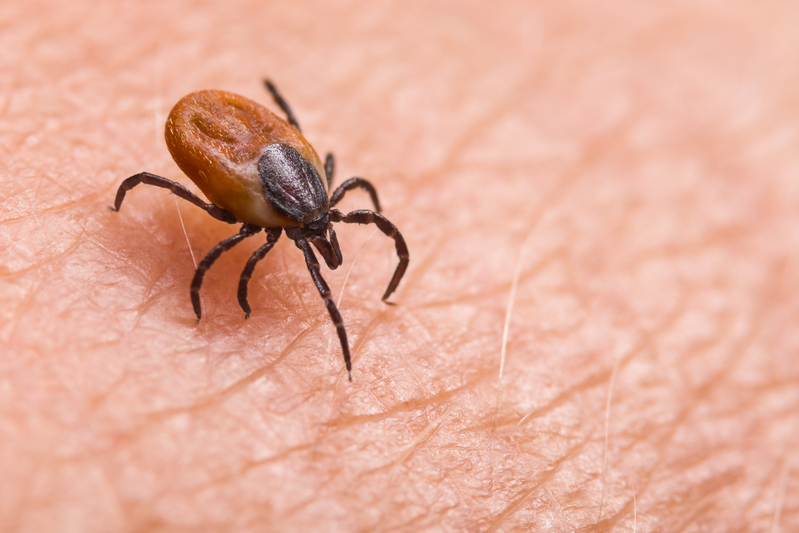Why Lyme Disease Is Still Misunderstood: What Doctors Aren’t Telling You in 2025
Lyme disease is a growing concern that affects approximately 476,000 people, according to recent estimates by the CDC. The condition features a variety of diagnostic challenges, which is why it’s often misunderstood. Misinformation, lack of standardized guidelines, and the absence of definitive testing also make the condition difficult to pin down.
According to studies by B.J. Webber at the U.S. Air Force School of Aerospace Medicine in 2019, around 53.3% of patients get false positives for Lyme. Similarly, surveys at the LymeDisease.org center suggest that 14% to 50% of patients are initially misdiagnosed with MS instead.
This brings forward the question: what are the doctors not telling us? How is this condition still so misunderstood? This article will offer some insight into the matter.
What Is Lyme Disease and Why Is It So Controversial?
Lyme disease is a widely recognized tick-borne condition where bacteria spread through a tick bite. The illness is controversial because there’s debate on whether or not it could become chronic.
Once doctors deliver the Lyme disease treatment, all lingering symptoms are referred to as “Post-Treatment Lyme Disease.” As patients miss symptoms and doctors misdiagnose due to limited data, the immune system reacts negatively even after the supposed “healing.”
The Basics of Lyme Disease — Infection and Symptoms
Lyme disease infections are caused by the Borrelia Burgdorferi bacteria (sometimes Borrelia Mayonii). The bacteria are carried by ticks and are transmitted to humans through their bites. Studies by the CDC in 2025 show that 50% of blacklegged ticks (Ixodes scapularis) carry the bacteria that cause Lyme.
Conventional data says that the tick has to be attached for at least 36 to 48 hours for the infection to spread. However, recent studies at the Canadian Lyme Foundation show that the disease can spread as soon as 12 hours.
Lyme disease exhibits a series of early symptoms once it enters the body. This includes the following:
- Fatigue
- Fever
- Joint pain
- Swollen lymph nodes
- Muscle and joint pain
- A rash (sometimes)
The difference between early Lyme and late-diagnosed Lyme is that the former is treated with a course of antibiotics since it is an acute infection. If it’s missed, misdiagnosed, or overall dismissed, the patient develops late-stage complications.
Symptoms of these complications include neurological symptoms including memory problems, facial palsy, and disruptions in the heart rhythm. Most doctors stop the treatment once the flu-like symptoms go away, dismissing the lingering, chronic ones. The patients are left to suffer, which makes the condition so controversial.
Why Lyme Disease Is Frequently Misdiagnosed or Missed

Lyme disease is frequently misdiagnosed or missed because its symptoms mimic a variety of other conditions. It has been nicknamed “The Great Imitator,” as it can look like CFS, fibromyalgia, and even a series of neurological disorders.
Symptoms are inconsistent, as a rash sometimes appears and other times it doesn’t. The lack of awareness among doctors and unreliable blood tests make it difficult to catch the disease in its incipient stages. Studies done on ticks by the CDC show that infection percentage ranges from none to 50%. Since tick infections seem to be crossing borders, it’s difficult to predict the likelihood of them being an infection.
The Bullseye Rash Myth
Some people infected with Lyme disease experience an erythema migrans, frequently referred to as a “bullseye rash.” This rash has a red spot at the bite point, followed by a clear layer, and then a red ring. It looks like a bullseye, hence its nickname.
Many believe that the rash is the first clear symptom of infection. However, based on studies from the CDC, Global Lyme Alliance, and more, around 30% to 50% of patients never get such a rash, causing the condition to be misdiagnosed.
Even if a rash appears, there’s no guarantee it will look like a bullseye. Some other rash types can include the following:
- An expanding rash with a crust in the center
- Multiple disseminated rashes
- A red, expanding oval rash
- Expanding rash with a clear center
- A rash with a bluish hue
- A reddish-blue lesion with a clear center
These rashes are easily mistaken for eczema, spider bites, ringworms, or even allergic reactions.
The average doctor frequently misdiagnoses the condition if the rash is not the classic bullseye. This can prove particularly harmful if the patient doesn’t recall the tick bite or doesn’t live in a hubspot for Lyme.
When Lyme Doesn’t Show Up on Standard Tests
Lyme disease doesn’t always show up on standard test results due to delayed immune responses or incorrect testing timing.
The first test used to determine Lyme’s presence is the Enzyme-Linked Immunosorbent Assay (ELISA). This looks for antibodies that your body produces after Borrelia Burgdorferi infection. If the test shows positive, it’s followed by the Western blot test to confirm the result.
These results are useful, but their accuracy depends on proper timing and an individual’s immune response. False positives occur due to reasons such as:
- Slow response of the immune system
- Testing too early
- Individuals not producing sufficient antibodies
- Lab variability and outdated testing tools
To put it simply, tests will only detect the infection if the immune system behaves exactly as expected. Since that’s not always the case, many people end up being misdiagnosed or testing negative, despite having all the symptoms.
How Quickly Can Lyme Disease Spread After a Tick Bite?
It is believed that Lyme disease spreads within 24 to 48 hours after the tick bite. Throughout this time, the tick has to be attached so it can transfer the bacteria during feeding time. However, the timeline varies from one individual to another.
In my experience, I have seen patients sick from Lyme even if the tick was not attached for long. I do suspect Lyme may be spread even at first bite.
Challenging the 24-Hour Rule
The “24-hour rule” is increasingly challenged by patient reports and emerging research. This suggests that even a brief infection could lead to an infection of Lyme disease if the bacterial content is high enough.
Once the tick attaches to the body, it begins feeding and exchanging pathogens with the host. After it’s fed enough, the tick virtually starts regurgitating some of its contents back into the bloodstream. This includes digestive enzymes, saliva proteins, and sometimes Borrelia Burgdorferi.
Studies led by Agnetha Hofhuis at the Centre for Infectious Disease Control Netherlands show that there’s a 2% risk of developing Lyme within less than 12 hours after attachment. This may not seem like much now, but when compared to the 5.2% chance after four days, it can be quite concerning.
These limitations in transmission windows caused people to falsely assume they were in the clear. Many patients remove the tick early and assume they haven’t been infected. Since they don’t test, the condition goes untreated and leads to a series of complications.
Why Antibiotics Don’t Always Prevent Chronic Lyme
Antibiotics don’t always prevent chronic Lyme due to Borrelia burgdorferi’s ability to evade treatment. Conventional wisdom believes that a short course of treatment is enough to clear the disease. However, research shows the matter is more complex than that.
Studies led by Felipe C. Cabello at the New York Medical College reveal that 20% of patients still develop post-treatment Lyme disease syndrome (PTLDS). In these cases, the antibiotics failed to fully stop the spread and associated long-term damage.
When Early Treatment Fails
Early treatment fails when the patient experiences persistent symptoms after completing the treatment. These could linger for months, perhaps even years after a patient was technically “cured.”
Conventional medicine may try to argue that the infection is gone and these are just some “lingering” effects. However, some believe it to be a sign that the infection persists, despite treatment. The bacteria manage to survive the hostile conditions while evading detection, triggering long-term inflammation.
Co-infection with bacteria such as Bartonella or Babesia could also prevent the Borrelia burgdorferi from fully clearing. That’s because the body is doing twice the work with the same resources. The treatment was not strong enough to handle both, so the immune system failed to eradicate everything.
What Happens When Lyme Becomes Chronic?
When Lyme becomes chronic, the condition evolves into something referred to as Post-Treatment Lyme Disease Syndrome. Whether you call it PTLDS or chronic Lyme, the reality remains the same: you technically test negative, but you’re still suffering.
As the infection persists, patients experience a series of chronic Lyme symptoms, including the following:
- Musculoskeletal pain
- Sleep disruptions
- Cognitive problems (e.g., memory issues and brain fog)
- Neurological problems
- Mood disorders
These symptoms linger over the next few months, perhaps even years. However, this is where things get controversial. Some say that the bacteria remain in the body, whereas others claim it’s an immune overreaction.
Mainstream medicine leans towards the latter. Still, the Borrelia Burgdorferi survives in the following circumstances:
- Hides in immune-protected tissue
- Uses biofilms to resist immune clearance
- Turns into a persistent form by developing resistance
Should this happen, what the patient feels is not just a “leftover.” It’s a sign that the bacteria are still there and waiting for the best moment to start multiplying again.
What Doctors Aren’t Telling You — Patient Stories and Unspoken Realities
Doctors fail to tell you that Lyme disease is not a clear-cut disease with obvious symptoms. For decades, they said that you’re in the clear if you remove the tick within 24 hours, and that early infection goes away with antibiotics. That’s not always the case.
Real Experiences That Defy Medical Textbooks
Real experiences with Lyme don’t always feature all the textbook symptoms. Many infected patients claim that they didn’t have a rash. This is confirmed by a 2024 CDC study, which says that 20% to 40% of patients don’t get erythema migrans.
Studies led by Eunice Chou also show that ELISA testing catches up to 40% of Lyme cases, but that also means that 60% remain undiagnosed. This caused the doctors to dismiss or overlook certain symptoms, leading to the condition worsening.
Doctors are trained to follow textbook symptoms, but the unspoken reality is sometimes different. Very often:
- Antibiotic treatments don’t always prevent chronic Lyme from developing
- Rashes don’t always have a bullseye shape
- Some people don’t get rashes at all
- Ticks don’t have to be attached for 24 hours to spread Lyme
Patients are still suffering, but have lost their trust in conventional medical treatments. This leads them to turn to functional medicine so they address the root cause of the disease.
The Hidden Role of Co-Infections and the Immune System
Co-infections and immune system issues worsen Lyme disease, making it more difficult to treat. What doctors fail to tell you is that ticks don’t just carry Borrelia Burgdorferi. They carry a whole cocktail of bacteria that get transmitted alongside the Lyme-causing one.
These can put a strain on the immune system. Instead of working to flush out one type of bacteria, it’s working on multiple types. With the combination of symptoms, doctors may not be able to diagnose the condition if the patient is unaware of the tick bite.
It’s Not Always Just Lyme
When you get Lyme disease, there’s a good chance other pathogens have made their way through your bloodstream. These co-exist in your body, and the immune system becomes overwhelmed.
Some common pathogens include the following:
- Babesiosis: A parasite similar to malaria, which goes after your red blood cells. It causes high fever, night sweats, and shortness of breath. “Air hunger” is a common symptom.
- Anaplasmosis: Caused by Anaplasma phagocytophilum and leads to severe headaches and muscle aches. Its early symptoms resemble Lyme.
- Bartonella: Known for causing a disease called “cat scratch fever.” It leads to vascular inflammation and a series of neurological symptoms. This bacteria tends to affect mood and can cause neuropsychiatric type symptoms.
Their presence puts extra strain on your immune system and delays recovery, triggers unusual symptoms, or causes the antibiotics to fail. According to studies at the University of Zürich, co-existing bacteria also share siderophores and enzymes. This way, they shield each other from the body’s natural defenses.
How to Advocate for Yourself If You Suspect Lyme
If you suspect Lyme, you advocate for yourself by taking action. The first 24 hours after a tick bite are critical. Waiting puts you at risk of Lyme disease, but rushing could lead to an incorrect tick removal technique.
What to Do After a Tick Bite
If you get bitten by a tick, you need to take immediate action, starting with the tick removal. Here’s what you’ll have to do after a tick bite:
- Remove the Tick Correctly: Use some fine-tipped tweezers to grab the tick as close to the skin as possible. You don’t want to leave the head in. Once you’ve grabbed it, slowly pull upward, but don’t twist.
- Document It: Take photos of the bite area and potential rashes. It’s best to save the tick in a plastic container or lab for testing.
- Log Your Symptoms: If you experience symptoms such as fever, fatigue, or brain fog, write them in a journal. No matter how insignificant they may seem now, they could prove vital if things escalate.
Sometimes, doctors prescribe prophylactic antibiotics (doxycycline, amoxicillin, cefuroxime) in a single dose if the tick is attached for more than 24 hours. It needs to be taken during the antibiotic window, which is 72 hours.
On the downside, one dose may not be sufficient or allowed by the providers. Plus, it may give a false sense of security, even if symptoms start later.
In my experience, if the tick did transmit Lyme, 1 pill has not shown effective at preventing acute and chronic lyme symptoms.
What to Request from Your Doctor
You should request a series of key tests after a tick bite. This includes the ELISA and Western Blot test, which are the CDC-recommended tests for Lyme.
Keep in mind that a test that came out negative in the first 2-3 weeks doesn’t rule out Lyme. You should still get a repeat test after 4-6 weeks if your symptoms persist and you suspect the disease.
If your doctor seems dismissive or unfamiliar with Lyme, ask for a referral. Doctors refer to specialists in this case, allowing for a second opinion.
Remember that patients are their own advocates. Push for differential diagnoses by asking what else it could be and testing for co-infections. Never settle for vague answers; a professional should be willing to answer your questions.
In my experience…
Doing an ELISA test only is extremely unhelpful. The traditional ELISA testing with reflex to western blot only if the ELISA is positive creates more issues with proper diagnosis. I had a patient who had a negative ELISA so it never reflexed the Western Blot. Thankfully I also ordered a stand alone Western Blot and she was CDC positive.
I can’t personally rely on Elisa in my patients, because it is rare it is actually positive. Remember, these tests are checking the immune response to these pathogens, not if the pathogen is actually in your body.
FAQs: Lyme Disease Misconceptions and Clarifications
1. Do You Always Get a Bullseye Rash?
No, Lyme disease doesn’t always appear with a bullseye rash. In fact, about one-third to half the infected people don’t get a rash at all. Some even get a regular-looking rash that looks like a simple bug bite reaction. This leads doctors away from tick-borne diseases and delays treatment.
2. Can a Tick Transmit Lyme in Less Than 24 Hours?
Conventional wisdom says no, but recent data says yes. Patient experiences say that Borrelia Burgdorferi can be transmitted after 12 to 16 hours, under certain conditions. This happens if the tick ate before attaching itself to you, causing it to regurgitate faster. Dr. Sue suspects transmission even occurs sooner than 12 due to her experience treating lyme patients for several years.
Are Chronic Symptoms All in Your Head?
No, the symptoms are not in your head. Post-Treatment Lyme Disease Syndrome (PTLDS), or “chronic Lyme” is real. It includes symptoms such as joint and muscle pain, persistent fatigue, and cognitive issues. However, this neurological Lyme condition is often overlooked because the test fails to detect the infection.
3.Is It Lyme, or Something Else?
It can be Lyme, but there’s also a possibility of being something else. This is especially the case when co-infections occur. Babesia, Anaplasmosis, and Bartonella can be transmitted alongside the Lyme-causing bacteria, requiring a different treatment route.







